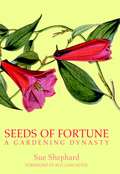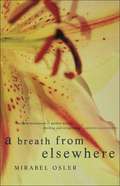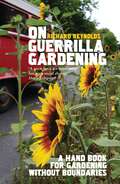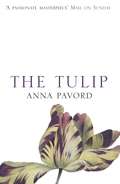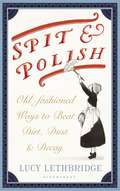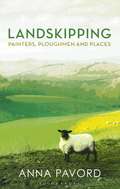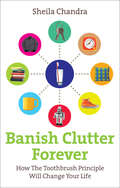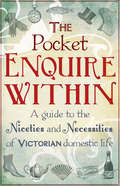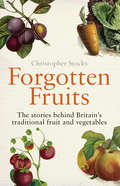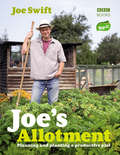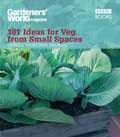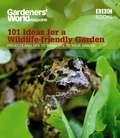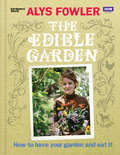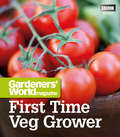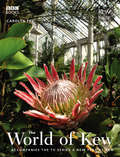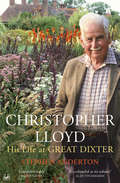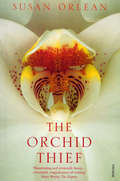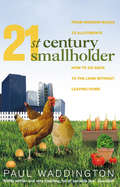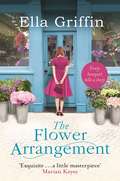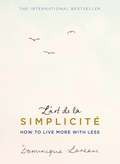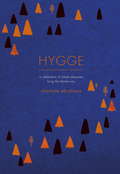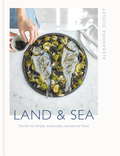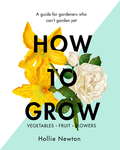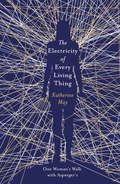- Table View
- List View
Seeds of Fortune: A Gardening Dynasty
by Sue Shephard Roy LancasterFor over a century, and across five generations, the Veitch family pioneered the introduction of hundreds of new plants into gardens, conservatories and houses and were amongst the foremost European cultivators and hybridisers of their day. The story begins in 1768 when a Scotsman called John Veitch came to England to find his fortune, starting out as a gardener for the aristocracy. Realising that horticultural mania had begun to spread throughout the social classes, John's son, James, opened a nursery in Exeter and began to send some of the first commercial plant collectors into the Americas, Australia, India, Japan, China and the South Seas. By the beginning of the twentieth century, the Veitch's had become key figures within the gardening establishment, involved with the Royal Horticultural Society from its beginnings and the great Chelsea Flower Show. Combining an historian's eye for detail with a flair for storytelling, Shephard charts the fortunes of one family and through them tells the fascinating story of the modern English garden.
A Breath from Elsewhere: Musings on Gardens
by Mirabel OslerMirabel Osler attempts in this work to take the reader beyond her own garden, offering encouragement to all gardeners, especially novices, to ignore books and try whatever appeals to them.
On Guerrilla Gardening: A Handbook for Gardening without Boundaries
by Richard ReynoldsOn Guerrilla Gardening is an activist's call to arms to all citizens - green-fingered, green-thinking or curious - to join the revolution of guerrilla gardening: transforming public space into oases of colour and life. The enemy: neglect, apathy and the disintegration of community spirit. The arsenal: daring, a packet of seeds and a passionate commitment to social change. When Richard Reynolds first embarked on guerrilla gardening, growing flowers by moonlight outside his tower block, he had no idea it was part of a growing global movement committed to cultivating the potential in the land regardless of all obstacles. Charting the battles fought across thirty different countries and the revolutionary history of this subculture, On Guerrilla Gardening is an inspirational take on gardening in the 21st century.
The Tulip: Twentieth Anniversary Edition
by Anna PavordTHE TULIP is not a gardening book. It is the story of a flower that has made men mad. Greed, desire, anguish and devotion have all played their part in the development of the tulip into the world-wide phenomenon it is today. No other flower has ever carried so much cultural baggage; it charts political upheavals, illuminates social behaviour, mirrors economic booms and busts, plots the ebb and flow of religious persecution. Pavord tells how the tulip arrived from Turkey and took the whole of Western Europe by storm. Sumptuously illustrated from a wide range of sources, this beautifully produced and irresistible volume will become a bible, a unique source book, a universal gift book and a joy to all who possess it.
Spit and Polish: Old-Fashioned Ways to Banish Dirt, Dust and Decay
by Lucy LethbridgeIn the late nineteenth century, general housework in the British home was so labour intensive that it required an army of servants to undertake it. Since then, the ways in which we look after our homes may have changed dramatically but the best and simplest of methods from that time still work for us today.From floor to ceiling, and leaving no awkward corner untouched, here are the tricks and techniques that generations once took for granted, distilled for modern use: how to get rid of water marks or heat rings on polished wood; the antibacterial qualities of simple vinegar; the damp cloth versus the dry duster; and using lemon juice to clear limescale. Combining fascinating 'below-stairs' social history with startling facts and useful tips, Lucy Lethbridge restores fast-disappearing skills to keep at bay dust, rust, mildew, stains and pests. Here, beautifully illustrated and entertainingly presented, are a bygone era's keys to a clean house.
Landskipping: Painters, Ploughmen and Places
by Anna PavordLandskipping is a ravishing celebration of landscape, its iridescent beauty and its potential to comfort, awe and mesmerise. In spirit as Romantic as rational, Anna Pavord explores the different ways in which we have, throughout the ages, responded to the land. In the eighteenth century, artists first started to paint English scenery, and the Lakes, as well as Snowdon, began to attract a new kind of visitor, the landscape tourist. Early travel guides sought to capture the beauty and inspiration of waterfall, lake and fell. Sublime! Picturesque! they said, as they laid down rules for correctly appreciating a view. While painters painted and writers wrote, an entirely different band of men, the agricultural improvers, also travelled the land, and published a series of remarkable commentaries on the state of agricultural England. They looked at the land in terms of its usefulness as well as its beauty, and, using their reports, Anna Pavord explores the many different ways that land was managed and farmed, showing that what is universal is a place's capacity to frame and define our experience.Moving from the rolling hills of Dorset to the peaks of the Scottish Highlands, this is an exquisite and compelling book, written with zest, passion and deep understanding.
Banish Clutter Forever: How the Toothbrush Principle Will Change Your Life
by Sheila ChandraWhy is it that even the most disorganised person never seems to lose their toothbrush? How can this simple fact solve all our clutter problems?The Toothbrush Principle is a simple yet inspired approach to de-cluttering your home. Whether you live in a mansion or a bedsit, this book will show you how to: organise according to the unconscious blueprint that naturally tidy people have, so that getting and staying organised is easy; know what to throw away with confidence; set up your wardrobe so you get much more use out of the clothes you have; work from home productively in a clear, designated space; tame your inbox!Step-by-step, room-by-room, you'll soon find that you hardly ever lose things, massive clear outs become a thing of the past and you never spend more than 10 minutes a day tidying up.So stop drowning in piles of clutter, learn how to be organised and start creating space to live out the life of your dreams!
How to Buy Your First Home (And How to Sell it Too): Your Property Expert
by Phil SpencerPhil Spencer, property expert and co-presenter of hit series Location, Location, Location, provides everything you need to know to help you buy (and sell) your first homeWant to own your own home, but not sure where to start? Need some friendly advice from a property professional?In How to Buy Your First Home, property expert Phil Spencer takes the worry out of the property market. Breaking everything down into simple and achievable steps, he makes this daunting process easy. Learn how to:- Find your perfect pad- Choose which mortgage is right for you- Negotiate with estate agents and sellers- Organise exchange and completion Including indispensable advice, money-saving tips and an essential trouble-shooting section, this guide covers everything a first-time buyer needs to know. And when it's time to move on again, this book will show you how to sell your home too.Phil Spencer is one the best-known faces on British television, co-presenting the hit Channel 4 series Location, Location, Location and Relocation, Relocation. Phil has written regularly columns in The Sunday Times and Country Life, and is contracted to Archant publishing to write columns that are syndicated in the group's numerous local glossy magazines which are distributed nationwide. Recent TV appearances include on The One Show, Children in Need and The Friday Night Project, and Phil also regularly appears on the radio to discuss property issues.
The Pocket Enquire Within: A guide to the niceties and necessities of Victorian domestic life
by George ArmstrongWhat is the correct way to carve a partridge?How should leeches be applied?How can egg whites be used to repair broken china?First published in 1856, Enquire Within rapidly became the indispensable guide to Victorian domestic life. Packed with words of wisdom and pithy advice, it covered everything from entertaining and etiquette to household management, and took in considered discussion of such arcane matters as how singing might prevent consumption, and which ointments will remove freckles, not to mention why chess should on no account ever be played at a ball.This new, charmingly illustrated pocket-sized edition contains a selection of hints and tips that not only provide a fascinating insight into the day-to-day life of Victorian Britain, but also, in places, reveal timeless wisdom that we would do well to heed today.
Forgotten Fruits: The stories behind Britain's traditional fruit and vegetables
by Christopher StocksIn Forgotten Fruits, Christopher Stocks tells the fascinating - often rather bizarre - stories behind Britain's rich heritage of fruit and vegetables. Take Newton Wonder apples, for instance, first discovered around 1870 allegedly growing in the thatch of a Derbyshire pub. Or the humble gooseberry which, among other things, helped Charles Darwin to arrive at his theory of evolution. Not to mention the ubiquitous tomato, introduced to Britain from South America in the sixteenth century but regarded as highly poisonous for hearly 200 years.This is a wonderful piece of social and natural history that will appeal to every gardener and food aficionado.
Joe's Allotment: Planning and planting a productive plot
by Joe SwiftWith hardly any previous veg-growing experience and even less time, when Gardener's World design guru Joe Swift decided to take on a 250 sq metre allotment in north London, some people thought he was mad. But with hard work and dedication, in less than a year Joe created his very own urban oasis and a source of delicious, fresh, organic produce for himself and his family.In this book Joe takes us through every stage of his education as an allotment gardener, from putting his name on the council waiting list to harvesting his first crops. He reveals everything he's learned about acquiring a plot, clearing the site, planning the beds, and planting, nurturing and protecting his fruit and vegetables. All the techniques he has mastered are described and illustrated, step by step.Joe also introduces us to his Veg Heroes like Monty Don and Geoff Hamilton - fellow plot-holders with years of experience and the crops to show for it - who inspired Joe to take up veg growing in the first place. And he shares with us his enjoyment of allotment gardening, the combination of hard work, fresh air and a sense of community that makes his plot such a special place to be.Whether you are an established allotment gardener or are thinking of putting your name down for a plot, Joe's Allotment will provide you with a wealth of advice and inspiration.
Gardeners' World: 101 Ideas For Veg From Small Spaces
by Jane MooreWhat can be more convenient than being able to nip into the garden to pick some salad for lunch, some herbs for the pot or some fresh veg or fruit for dinner? Nothing beats the flavour of home-grown produce, or, in these days of additives and preservatives, the reassurance of knowing what is in your food. Contrary to popular belief, you don't need an enormous garden, or a dedicated spot within it to grow your own, nor do you need to join the mammoth waiting lists for a local allotment; all you need is a window ledge, some steps, a patio, some wall space or even some gaps in your flower borders.In this handy book the team at Gardeners' World Magazine will give you loads of tips on how to get started if you've never grown fruit or vegetables before, suggest some fun and practical ways you can grow your favourite crops in a limited space or small garden, and tell you how to get the best from what you grow. Growing your own has never been more popular or more simple, and in this essential little guide, packed with inspirational ideas and advice from Gardeners' World Magazine, everyone can get in on the act. So what's stopping you now? Go on, grow your own grub!
Gardeners' World: 101 Ideas For A Wildlife-friendly Garden
by Mick LavelleIf you yearn to watch blackbirds feeding their young, and butterflies flitting amongst the flowers but you don't have the space for a meadow or want to give your whole garden over to nature, don't despair: with just a few clever tricks you can bring the countryside and its residents to your garden, even in the most urban of locations. Encouraging a little wildlife into your garden can bring a lot of benefits for the gardener. Having a wildlife-friendly garden isn't just about letting nature do its thing so that you can enjoy watching it from your window or the patio, it has a far more important contribution to make. Let nature do the hard work of gardening for you: ladybirds and blue tits will make short work of aphids, while birds, bats and hedgehogs will feast on larger insects. It's biological control at its best; leaving you more time to sit in your deck chair and listen to the dawn chorus of the birds, the croaking of frogs, and the nighttime grunting of visiting hedgehogs. If the natural look of a wildlife garden isn't your thing, you'll be pleased to know that even the most modern, minimalist garden can include features which will bring in wildlife without cramping your style. In this book, the team at Gardeners' World Magazine bring you tips and advice on simple ways in which you can create a haven for wildlife - whatever your garden style.
The Edible Garden: How to Have Your Garden and Eat It
by Alys FowlerIn this timely book, Gardeners' World's thrifty and resourceful Alys Fowler shows that there is a way to take the good life and re-fashion it to fit in with life in the city. Abandoning the limitations of traditional gardening methods, she has created a beautifully productive garden where tomatoes sit happily next to roses, carrots are woven between the lavenders and potatoes grow in pots on the patio. And all of this is produced in a way that mimics natural systems, producing delicious homegrown food for her table. And she shares her favourite recipes for the hearty dishes, pickles and jams she makes to use up her bountiful harvest, proving that no-one need go hungry on her grow-your-own regime. Good for the pocket, good for the environment and hugely rewarding for the soul, The Edible Garden urges urbanites everywhere to chuck out the old gardening rules and create their own haven that's as good to look at as it is to eat.
Gardeners' World: First Time Veg Grower
by Martyn CoxWhen it comes to fresh vegetables, nothing comes close to growing your own - but where to start? For those of us that crave the crisp taste of home-grown tomatoes, peppers, courgettes and more but lack the crucial experience and know-how, it can be difficult to make those first steps to transform a barren patch into a luscious kitchen garden - even for experienced gardeners, the move from decorative gardening to practical vegetable growing can prove tricky.Gardeners' World: First Time Veg Grower can help you make that journey, with simple and practical expert advice from the moment you first don your wellies right up until you're harvesting your own crops. With step-by-step guides and clear colour illustrations helping you to get the most out of your plot all year round, this compact guide is an essential addition to any gardener's shelf. From preparing your ground to sowing, nurturing and maintaining your plants, let the practiced hands at the UK's best-selling gardening magazine help you create the vegetable patch of your dreams.
The World of Kew
by Carolyn FryWithout plants, there would be no life on earth. Kew Gardens is famous for its breathtaking displays of flowers and tree,s but this World Heritage Site is also a globally important scientific and historical organization. Scientists and gardeners use the plants and knowledge that have been collected at Kew since the eighteenth century to advance understanding of the earth's environment and of how plant lfe can be used for human benefit. Published to accompany the ten-part BBC2 series A New Year at Kew, this fascinating book takes us behind the scenes to show the extraordinary range of work carried out at Kew Gardens and Wakehurst Place - home to the Millenium Seed Bank - and by Kew staff overseas. From using forensic botant to micropagating plants facing extinction, from investigating herbal cures from Alzheimer's disease to replanting the volcano-ravaged island of Montserrat, the book shows us aspects of Kew's work that are largely hidden from view abut the benefits of which are far reachingl In the process it provides an absorbing and accessible introduction to such topical subjects as biodiversity, practical conservation and economic botany. Lavishly illustrated and filled with engrossing stories and engaging characters, this book brings to life the world of Kew and the global importance of its work.
Christopher Lloyd: His Life at Great Dixter (Pimlico Ser.)
by Stephen AndertonChristopher Lloyd (Christo) was one of the greatest English gardeners of the twentieth century, perhaps the finest plantsman of them all. His creation is the garden at Great Dixter in East Sussex, and it is a tribute to his vision and achievement that, after his death in 2006, the Heritage Lottery Fund made a grant of £4 million to help preserve it for the nation. This enjoyable and revealing book - the first biography of Christo - is also the story of Dixter from 1910 to 2006, a unique unbroken history of one English house and one English garden spanning a century. It was Christo's father, Nathaniel, who bought the medieval manor at Dixter and called in the fashionable Edwardian architect, Lutyens, to rebuild the house and lay out the garden. And it was his mother, Daisy, who made the first wild garden in the meadows there. Christo was born at Dixter in 1921. Apart from boarding school, war service and a period at horticultural college, he spent his whole life there, constantly re-planting and enriching the garden, while turning out landmark books and exhaustive journalism. Opinionated, argumentative and gloriously eccentric, he changed the face of English gardening through his passions for meadow gardening, dazzling colours and thorough husbandry. As the baby of a family of six - five boys and a girl - Christo was stifled by his adoring mother. Music-loving and sports-hating, he knew the Latin names of plants before he was eight. This fascinating book reveals what made Christo tick by examining his relationships with his generous but scheming mother, his like-minded friends (such as gardeners Anna Pavord and Beth Chatto) and his colleagues (including his head gardener, Fergus Garrett, a plantsman in Christo's own mould).
The Orchid Thief: A True Story Of Beauty And Obsession
by Susan OrleanSusan Orlean first met John Laroche when visiting Florida to write for the New Yorker about his arrest for stealing rare ghost orchids from a nature reserve. Fascinated both by Laroche and the world she uncovered of orchid collectors and growers, she stayed on, to write this magical exploration of obsession and the strange world both of the orchid obsessives and of Florida, that haunting and weird 'debatable land' of swamps and condos, retirement communities and real-estate scams. The world of the orchid hunters, breeders and showmen, their rivalries, vendettas and crimes, smuggling, thefts and worse provide the backdrop to a fascinating exploration of one of the byways of human nature, the obsessive world of the collector, and the haunting beauty of the flowers themselves.
21st-Century Smallholder: From Window Boxes To Allotments: How To Go Back To The Land Without Leaving Home
by Paul WaddingtonAchieving genuine self-sufficiency of the kind described in John Seymour's classic guide is sadly beyond the vast reach of the urban majority today. Few have the space, and for those few there are comprehensive guidebooks. But where do the rest of us look for the answers to questions like how much effort does it really take to grow your own food? Is beekeeping difficult? Is solar power really worth the bother?From a small terraced house in the middle of a big city, Paul Waddington has made it his business to find out, and while trying it himself, has created a practical and absorbing guidebook along the way. It includes easy-to-read lists, tables, personal anecdote, and stunning illustrations, and more importantly demystifies the subject with practical tips that get to the heart of the matter to show you how you can enjoy the fulfilling aspects of the smallholding life without the hassle and expense of 'going all the way'. If you want to go back to the land without leaving home, this is the perfect guide.
The Flower Arrangement: An uplifting, moving page-turner.
by Ella GriffinDrawing together heartwarming characters and a story that will keep you turning the pages, The Flower Arrangement is a captivating tale woven around a Dublin florist.Every bouquet tells a story...And every story begins at Blossom & Grow, a tiny jewel-like flower shop in the heart of Dublin. Here, among the buckets of fragrant blooms, beneath the flickering candles and lanterns, florist Lara works her magic, translating feelings into flower arrangements, changing hearts and lives. Whether its bridal posies, anniversary bouquets or surprise deliveries from secret admirers, Lara arranges the flowers for all manner of life-changing moments. No stranger to heartbreak herself, Lara knows flowers say more than words ever can. But can the flowers that heal the customers work their magic on Lara? The perfect feel-good escapist read for fans of Erica James, Roisin Meaney and Lucy Dillon.
L'art de la Simplicité (The English Edition): How to Live More With Less
by Dominique LoreauIf simplicity is an art, then Dominique Loreau is a master. Having lived in Japan for many years and inspired by oriental philosophy, Dominique Loreau discovered the beauty of a life well lived through the art of simplicity. Her lifestyle rests on the principle of 'less is more', and imbues all areas of existence, from the material to the spiritual. She captured her philosophy in the ground-breaking L'art de la Simplicité, which was an massive bestseller in her native France and is now available in the English language for the first time. Simplify your home, empty your wardrobe, abandon compulsive purchases, eat more frugally but better, take care of your body and mind. From the art of feeling well in your home to the art of feeling well in your body, this compelling and elegant book will transform your life and take you on an empowering journey to happiness. You will feel energised, more confident and free. You will discover the essence of being truly alive and how to live a more centred life. One full of real pleasure, clarity and satisfaction.
Hygge: A Celebration of Simple Pleasures. Living the Danish Way.
by Charlotte AbrahamsCandlelight is hygge; the smell of freshly brewed coffee is hygge; the feel of crisp, clean bed linen is hygge; dinner with friends is hygge. 'Hygge', pronounced 'hoo-ga', is a Danish philosophy that roughly translates to 'cosiness'. But it is so much more than that. It's a way of life that encourages us to be kinder to ourselves, to take pleasure in the modest, the mundane and the familiar. It is a celebration of the everyday, of sensual experiences rather then things. It's an entire attitude to life that results in Denmark regularly being voted one of the happiest countries in the world. So, with two divorces behind her and her 50th birthday rapidly approaching, journalist Charlotte Abrahams ponders whether it's hygge that's been missing from her life. Is it a philosophy we can all embrace? In a society where lifestyle trends tend to centre on deprivation - be it no sugar, no gluten, no possessions - what does cherishing yourself actually mean? And will it make her happy? In Hygge, Charlotte Abrahams weaves the history of hygge and its role in Danish culture with her own attempts, as an English woman, to embrace a more hygge life. In this beautifully written and stylishly designed book, she examines the impact this has on her home, her health, her relationships and, of course, her happiness. Light a candle, pour yourself a glass of wine, and get ready to enjoy your more hygge life.
Land & Sea: Secrets to simple, sustainable, sensational food
by Alexandra DudleyA celebration of real food and wholesome ingredients, Land and Sea brings sustainable eating to the table in true flavour and style. With advice on using the whole ingredient (no matter what it is); how you can make the most of leftovers; and how to be creative with herbs and spices, these recipes show you how to inject every mealtime with flavour and goodness.Inspired by her Dutch and German roots, Alexandra's storybook style recipes include family breakfasts of sweet-spiced, apple puffed pancakes - a traditional 'Dutch Baby' - warming lunches such as Hake, Prawn and Lemongrass Curry, and comforting dinners to share like Spatchcocked Persian-Spiced Peanut Butter Chicken. And with a whole chapter on how to make vegetable 'king', you'll also find lots of ideas to make the most from your bounty, such as Caramelised Carrot Tarte Tatin and Shepherdless Pie.Including beautiful photography and stunningly designed, these recipes will show you how to celebrate all that Land and Sea has to offer, to the full.
How to Grow: A guide for gardeners who can't garden yet
by Hollie NewtonThis is the gardening book reimagined for a new generation. A book for people who want to learn how to grow things, but haven't got a clue where to start.With the average person now spending an enormous 8 hours and 41 minutes in front of a screen every day, gardening is an easy way to escape for half an hour. Whether on a rented balcony or a sunny kitchen windowsill, it turns out growing something with your own two hands can make you feel better. Which is where HOW TO GROW comes in. Irreverent and inspiring, this book will equip you with all the know-how and confidence you need to take your first steps into a lifelong gardening love affair - trowel in one hand, drink in the other.From growing your first wonky courgette to completely transforming a shady patio garden, in HOW TO GROW, self-taught gardener Hollie Newton divulges all the secrets she's discovered over the past few years as she's journeyed from gardening novice to vegetable-grower-extraordinaire - all from her pint-sized London garden. With chapters on easy-to-grow veg, fruit, herbs, salad and flowers (along with plenty of tried-and-tested guidance to keeping those plants alive, and delicious recipes to make the most of your haul), you'll also learn everything from the basics of planning your garden to stylish design ideas.Focusing on small and urban spaces and including beautiful photography throughout, this is practical advice for a whole new generation of gardeners.
The Electricity of Every Living Thing: A Woman’s Walk in the Wild to Find Her Way Home
by Katherine MayPerfect for fans of The Salt Path and The Outrun, this book is a life-affirming exploration of wild landscapes, what it means to be different and, above all, how we can all learn to make peace within our own unquiet minds.'A windswept tale, beautifully told' Raynor Winn - The Salt Path 'A manifesto for the value of difficult people. I loved it' Amy Liptrot - The OutrunIn August 2015, Katherine May set out to walk the 630-mile South West Coast Path. She wanted to understand why she had stopped coping with everyday life; why motherhood had been so overwhelming and isolating, and why the world felt full of inundation and expectations she can't meet. Setting her feet down on the rugged and difficult path by the sea, the answer begins to unfold. It's a chance encounter with a voice on the radio that sparks a realisation that she has Asperger's Syndrome. The Electricity of Every Living Thing tells the story of the year in which Katherine comes to terms with her diagnosis. It leads to a re-evaluation of her life so far - a kinder one, which finally allows her to be different rather than simply awkward, arrogant or unfeeling. The physical and psychological journeys become inextricably entwined, and as Katherine finds her way across the untameable coast, she also finds the way to herself.What readers are saying about The Electricity of Every Living Thing:'This book showed a realistic view of how autism feels to some people, and it's explained so well''The astonishing sensitivity and awareness in her writing, both about the beautiful landscapes and nature around on her walks, and in relation to her family, friends and self put paid to many outdated myths about what it is like to be autistic''Compelling and transformative'
